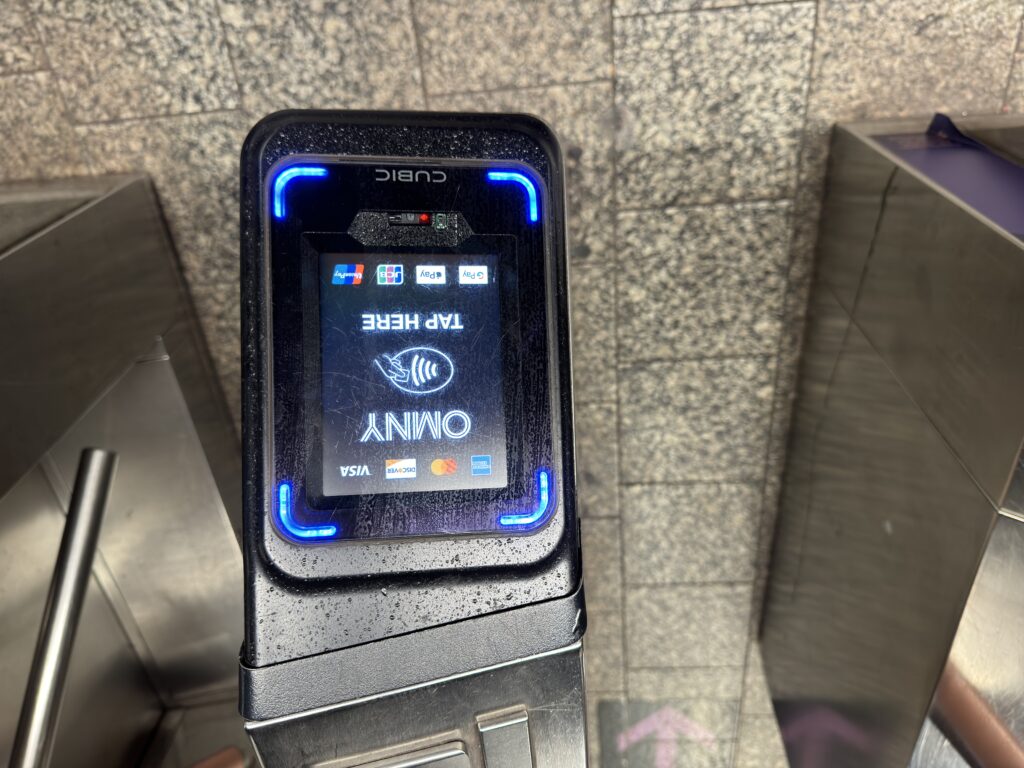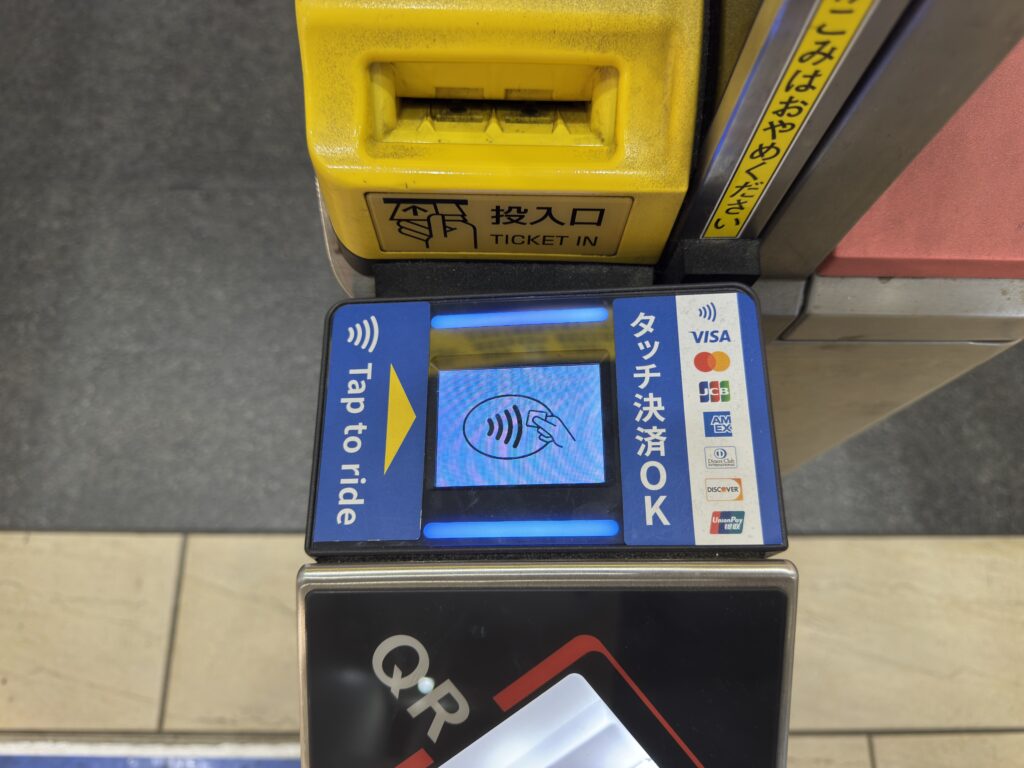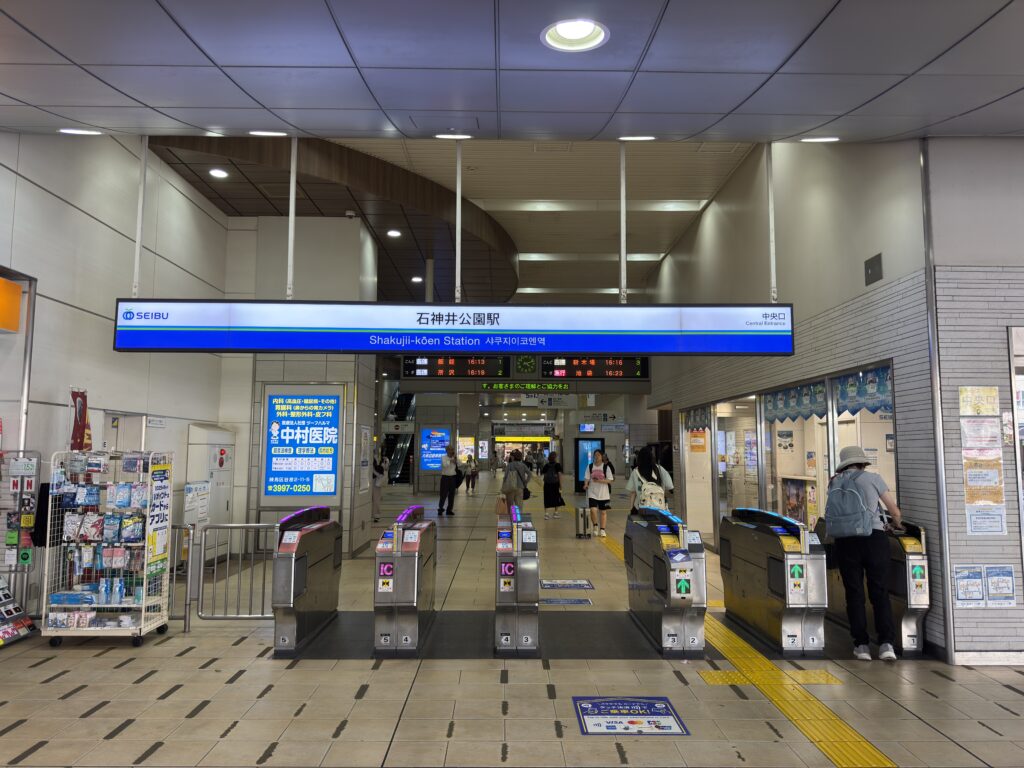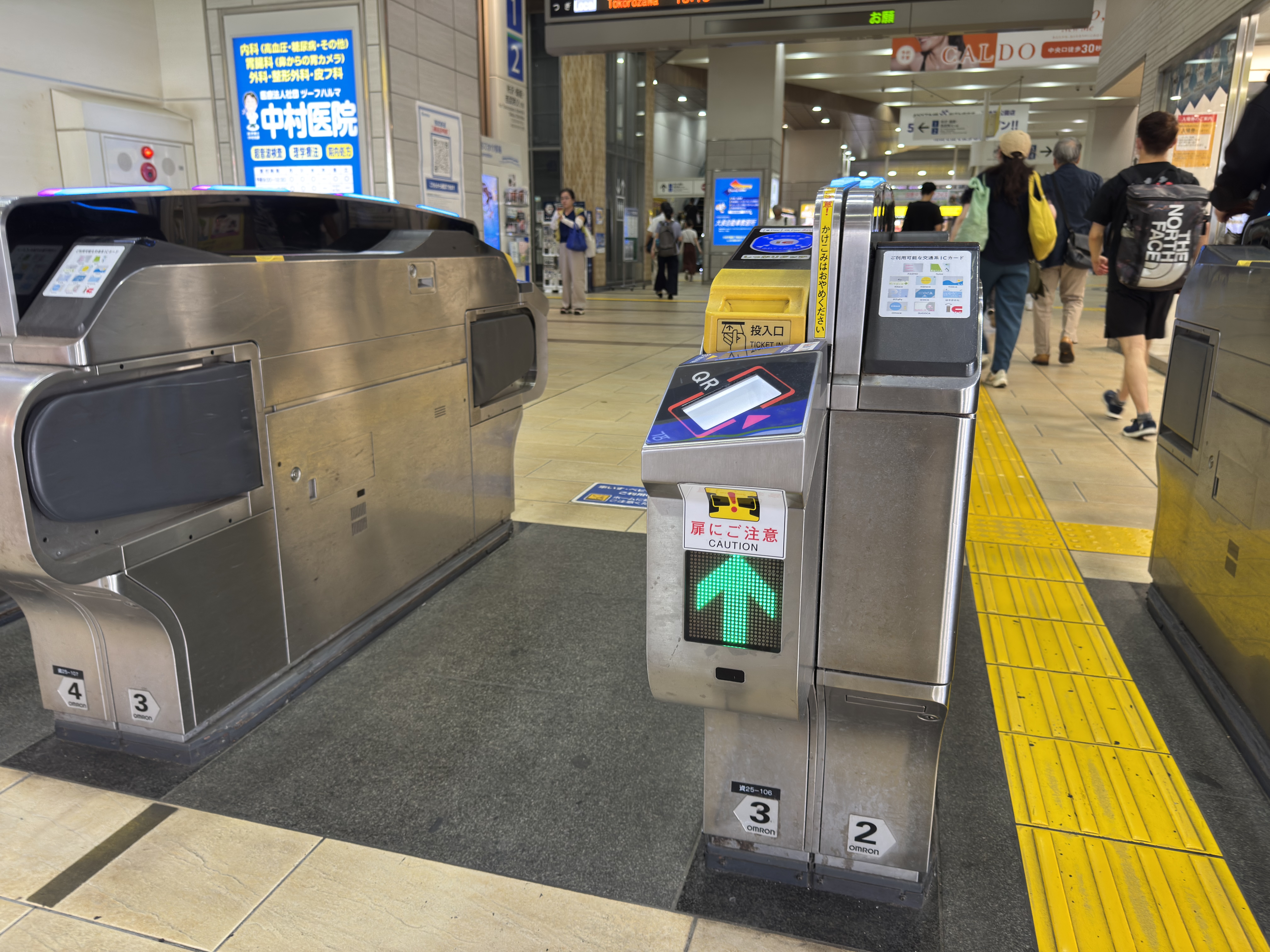Those who have traveled to Japan are probably familiar with the Suica card, a tap-and-go transit card to get in and out of fare gates when riding transportation. It’s pretty much a necessity for both Japanese residents and tourists alike.
Passengers usually refill these at ticket machines located inside train stations. stations, and in addition to the purpose of going through station turnstiles, these transit cards are also accepted as a form of payment at many shops and restaurants. To put it simply, transit cards in Japan are incredibly conveninent and are used by nearly everyone.
That said, another form of payment for transportation on the rise around the world has been tap-to-pay with credit cards. We see this in New York City:

With this, all you have to do is take your regular credit card (or your phone, as you can use Apple Pay in place of the credit card) and tap. The benefit of this is that you don’t need to charge a transit card with money before you hop on the train. There’s no need to line up at a ticket machine and wait to refill your card, or remember how much money is left on your card.
This is especially convenient for visitors, as this allows for a lot less confusion using the transportation system and removes the risk of leaving money on the transit card when going home at the end of the trip.
Japan has slowly begun adopting this system at some of its stations. I spotted one at my home train line today.

I was surprised to see it accept Diners Club and Discover. Both are very uncommon in Japan (especially Discover, it’s not issued in the country, I believe).
Just one turnstile was equipped with tap-to-pay, however. It was the middle one of the five, which is wheelchair accessible. I also did not see it in use during the few minutes I stood around the gates taking these photos.

Moreover, adoption at each train line in Tokyo varies, as only a handful of stations are equipped with these. Meaning that even if I could complete a trip using my credit card within my train line, I’d still likely need a transit card for trips in other parts of the city.
Japanese society heavily favors cash, with just 39% of POS transactions being cashless in 2023, compared to 86.9% in the US. Transit cards easily go hand-in-hand with cash, as that’s what you need to charge them at ticket machines. Credit cards to ride the train would be a big step away from a cash lifestyle.
This is my perspective on partly why adoption is still low, with the inconsistent placement of tap-to-pay turnstiles around the city being the other half of the reason. Until everyone can be confident that they can use their credit cards at every station and at every turnstile,
If you’re traveling to Japan anytime soon, I’d still stick with getting a transit card, such as Suica or Pasmo (I use Pasmo!). The convenience of being able to use them everywhere, including stores and restaurants, outweighs the benefits that tap-to-pay brings. However, it’ll be interesting to see how tap-to-pay progresses in Tokyo for transportation moving forward.
All photos taken by the author.










With iPhone, you can get a digital Suica card, and keep it funded – then use the phone at the turnstile.
Yes. I use that, just with Pasmo.